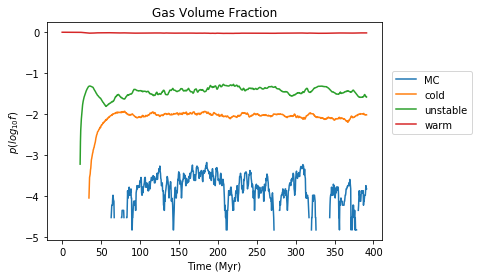Fragmentation of Gas in the Two-Phase ISM
In my Master’s thesis, I worked on the thermal instability driven fragmentation of the ISM, and how various physical processes control this process. I worked on both 2D and 3D numerical simulations using the Athena MHD code of local, kiloparsec scale patches of the ISM in a shearing-box framework. We simulated a typical patch of the ISM in the solar neighbourhood, driving turbulence mimicking supernovae from scales beyond the domain, with self-gravity, thermal conduction, and a simplistic prescription for feedback. We found that, after an initial transient phase, the conditions in the ISM and the fragmentation into the cold and warm phases, reach a statistically steady state. The gas fraction in the cold gas, power-spectra of the resulting turbulence, and the energy input to the smallest, densest scales: all reach a steady state. Comparing with control simulations, we found that neglecting either feedback or galactic shear led to runaway collapse, and does not reach this steady state. We also tested the effects of a more pronounced shear or feedback strength on the fragmentation properties, and the degree of turbulence in the cold gas.
Please refer to my Master’s Thesis if you are interested in these results.
